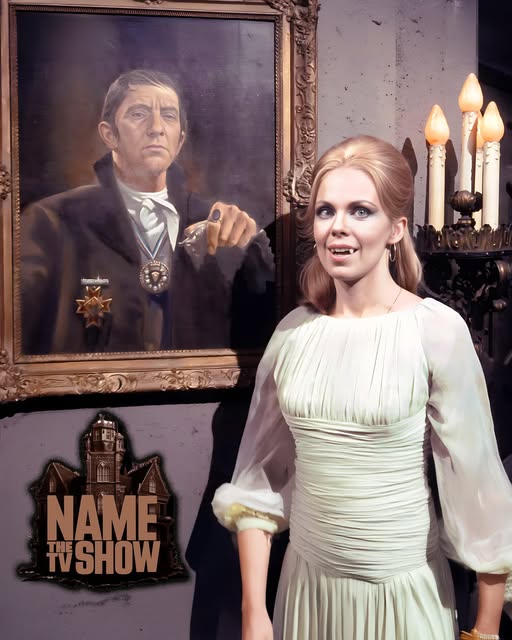Gothic, groundbreaking, and gloriously strange — how a 1966 daytime drama became a cult sensation
Before Buffy slayed, before Twilight sparkled, and long before prestige horror became mainstream, there was Dark Shadows — the gothic daytime soap opera that defied every rule and became one of television’s most unlikely cult classics.
Premiering on June 27, 1966, Dark Shadows began its life as a fairly standard melodrama. Set in the fog-drenched town of Collinsport, Maine, the series followed the wealthy but haunted Collins family and the mysterious happenings at their ancestral home, Collinwood Mansion. In its early episodes, the show leaned more into eerie atmosphere than the supernatural, weaving a slow-burn story of family secrets, lost love, and ghostly whispers.
But all of that changed 10 months in — with the arrival of a vampire.

A Bite of Genius: Enter Barnabas Collins
In April 1967, the writers introduced a new character meant to appear briefly: Barnabas Collins, a 175-year-old vampire accidentally freed from his chained coffin. Played by Canadian actor Jonathan Frid, Barnabas was elegant, tormented, and charismatic — a striking contrast to the fanged monsters of classic horror films.
What happened next was nothing short of a television phenomenon.
Audiences, particularly teenagers and college students, became obsessed with Barnabas. Ratings surged. Fan mail flooded in. What was once a moody soap opera became a cultural lightning rod, launching a full embrace of the supernatural. Ghosts, witches, werewolves, time travel, doppelgängers, parallel universes — Dark Shadows didn’t just break the rules of daytime TV, it gleefully rewrote them.

Camp Meets Classic Literature
Created by Dan Curtis, Dark Shadows pulled inspiration from classic gothic literature, borrowing elements from Jane Eyre, Dracula, and Wuthering Heights, while infusing them with a bold, campy energy. Despite its low budget and famously frequent production flubs (booms visible in frame, missed cues, forgotten lines), the series had an unmistakable style — ornate sets, haunting organ music, and stories that embraced the operatic and absurd in equal measure.
Over its five-year run (1966–1971), the show aired over 1,200 episodes. Unlike most soaps of the time, it embraced serialized storytelling with cliffhangers that kept viewers hooked day after day. You never knew if the next episode would bring a séance, a resurrection, or a descent into the 1800s.
At its peak, Dark Shadows was a merchandising machine: board games, trading cards, comic books, a hit soundtrack, and two theatrical films (House of Dark Shadows in 1970 and Night of Dark Shadows in 1971). Jonathan Frid’s portrayal of Barnabas made him one of TV’s first sympathetic monsters — paving the way for generations of tortured antiheroes.

A Cult That Wouldn’t Die
When the show was canceled in 1971, it faded from the mainstream but found new life in syndication — and later, on home video. Fans organized conventions, launched fanzines, and kept the Dark Shadows legacy alive across decades. The show’s appeal wasn’t just nostalgia. Its ambition, atmosphere, and sheer weirdness made it a standout, even as television evolved.
In 1991, NBC attempted a primetime revival starring Ben Cross as Barnabas. Though critically admired for its lush production values, the series was short-lived, canceled after one season due to the Gulf War disrupting its schedule.
A second reboot came in 2004 — this time from the WB network — but never made it past the pilot. Then in 2012, director Tim Burton and Johnny Depp teamed up for a big-screen reimagining: a stylized, comedic version of Dark Shadows that divided fans and critics alike. Though visually striking, many longtime fans felt the film missed the gothic heart of the original.
And yet — Dark Shadows remains undead.

Why It Still Matters
At first glance, it’s easy to laugh at Dark Shadows — the theatrical acting, the visible boom mics, the wildly melodramatic plot twists. But beneath the camp lies a groundbreaking show that dared to bring horror into daylight — literally.
It was the first TV show to treat supernatural elements not as cheap thrills but as serialized drama. It gave us a vampire with a soul decades before that became a trend. It had strong female characters, emotionally complex antiheroes, and wasn’t afraid to be deeply, unapologetically strange.
And that’s why it endures.
In an age of cinematic universes and multiverse timelines, Dark Shadows feels surprisingly modern. It proved that daytime TV could be dark, daring, and wildly imaginative. It offered escapism, yes, but also emotion, romance, and fear — all in a 22-minute package airing at 4:00 p.m.

So, if you ever rushed home from school, flicked on the TV, and found yourself hypnotized by a creaky mansion and the shadow of a vampire, you weren’t alone.
You were part of something rare.
Something undead.
Something… Dark Shadows.